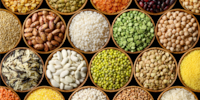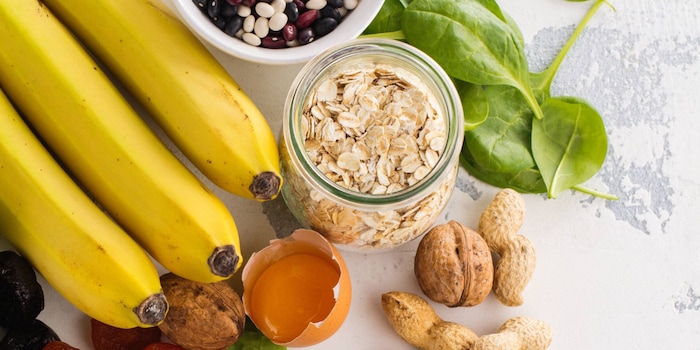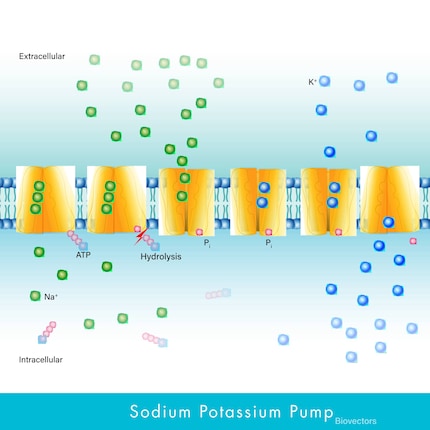
Guide
Dietary fibre: why it’s so important and how to eat more of it
by Anna Sandner

Covering your daily potassium requirement isn’t difficult. And thank goodness it isn’t. The mineral is essential for muscle strength, nerve function and regulating blood pressure. Read on to find out which foods contain a lot of potassium, what the sodium-potassium pump is all about and how potassium helps with high blood pressure.
The German Nutrition Society recommends that adults consume 4 grammes of potassium a day through food (article in German). Fortunately, this is easy, as many foods contain sufficient potassium. That’s a good thing. Without the mineral, nothing in the body works.
Potassium is required for the so-called sodium-potassium pumps, located in the cell membranes of each individual cell. Here, they’re essential for the transport of substances between cells and the agitation of muscle and nerve cells. They also regulate water balance and thus indirectly control blood pressure.
As the name suggests, sodium-potassium pumps in cell membranes require potassium in order to do their job. They actively transport sodium ions out of the cell and potassium ions in at the same time. As they transport more positively charged sodium ions out of the cell than positively charged potassium ions into it, they build up an electrical charge difference across the cell membrane – the so-called membrane potential.

The membrane potential is crucial for the agitation of nerve and muscle cells. Without a correct membrane potential, signals can’t be transmitted efficiently, so nerve conduction is impaired.
The imbalance of potassium and sodium ions between the inside and outside of a cell also regulates water balance. If more sodium is kept outside the cells and potassium flows into them at the same time, water is drawn out of the cells by osmosis. This flow of water influences blood pressure. If more fluid is released from the cells into the space outside them, the volume of this fluid increases. This can increase blood pressure. If less fluid is present, blood pressure is lowered.
Through the controlled distribution of ions, sodium-potassium pumps also ensure that nutrients can be transported into cells and waste products out of them.
A lack of potassium is rare with a balanced diet. However, after a gastrointestinal infection, vomiting and diarrhoea can result in too little potassium in the body. Diuretics and laxatives can also lead to increased potassium excretion. Due to the importance of potassium for normal muscle contraction, this can then manifest itself in muscle cramps and weakness. As the heart is also a muscle, potassium deficiency can also trigger cardiac arrhythmia.
By regulating blood pressure, a low potassium level also increases the risk of high blood pressure. Neurological symptoms such as numbness, tingling, confusion and seizures are also possible if there’s a lack of potassium. In addition, a potassium deficiency can lead to disturbances in the body’s water balance.
Many types of fruit and vegetables are rich in potassium, for example carrots, kohlrabi, tomatoes, apricots and bananas. Nuts are also good sources, as is the case for many minerals. Some types of flour such as [spelt](search?q=spelt flour) and [rye flour](search?q=rye flour) also contain a lot of potassium.
Another tip when cooking: potassium is easily absorbed by water during cooking, which is why it’s advisable to steam or stew potassium-rich foods. If you cook them anyway, you can simply use the cooking water. As a base for sauces or soups, so no potassium is lost, for example.
Science editor and biologist. I love animals and am fascinated by plants, their abilities and everything you can do with them. That's why my favourite place is always the outdoors - somewhere in nature, preferably in my wild garden.
Practical solutions for everyday problems with technology, household hacks and much more.
Show all